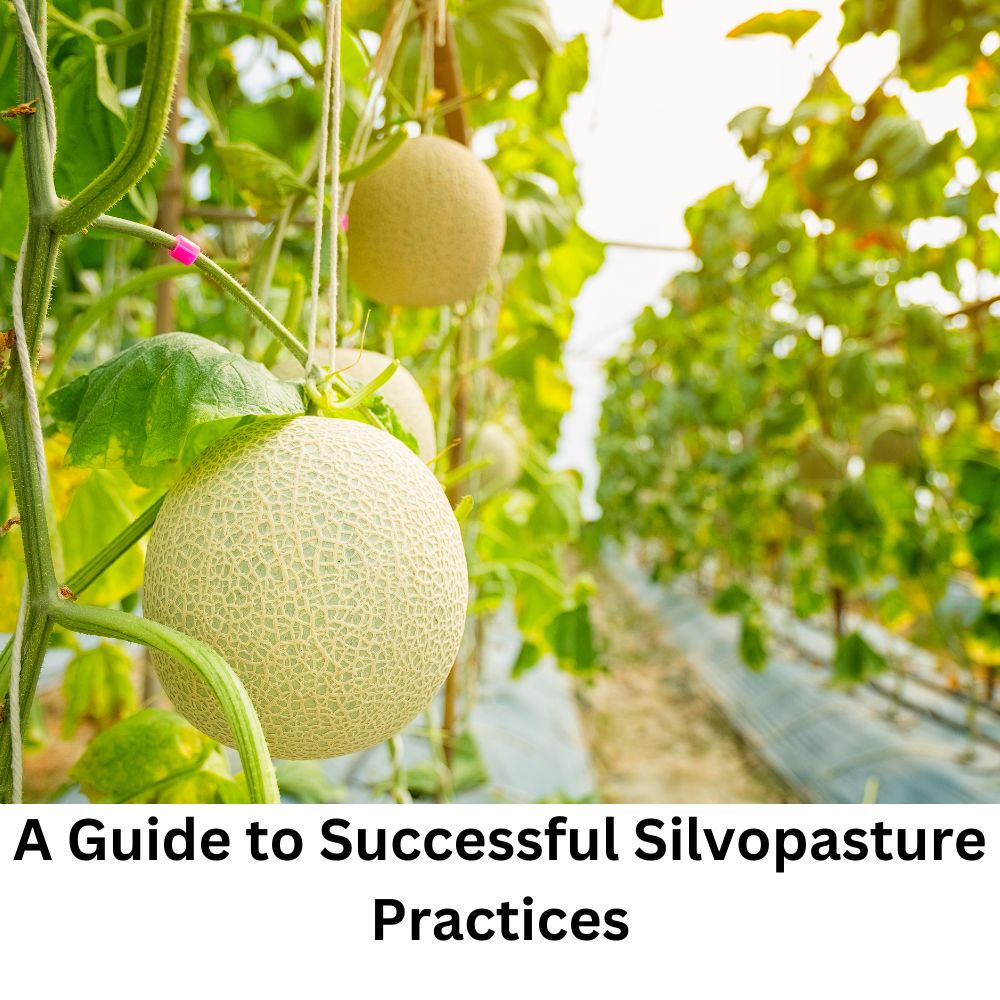Introduction
Silvopasture is a sustainable land management practice that combines the cultivation of trees with pastureland for livestock. This integrated approach offers numerous benefits, from improved animal well-being to enhanced land productivity and environmental conservation. This article will explore silvopasture’s fundamental principles and practices, providing a comprehensive guide for those interested in implementing this holistic and eco-friendly farming method.
The Foundations of Silvopasture
Silvopasture is founded on combining trees and pasture in a mutually beneficial system. Here are the foundational elements:
a. Tree Selection: Choose species well-suited to your climate and soil conditions. Consider the needs of your livestock, such as shade, shelter, and forage value. Common tree species in silvopasture systems include oak, pine, and black walnut.
b. Pasture Management: Maintain healthy pasture vegetation by using rotational grazing practices. This involves dividing pastures into smaller paddocks and periodically rotating livestock to prevent overgrazing and allow forage recovery.
c. Integrated Approach: Silvopasture requires an integrated approach that considers the needs of trees and livestock. The right balance between tree density and pasture management is crucial for success.
Site Selection and Planning
Successful silvopasture starts with thoughtful site selection and planning:
a. Soil Assessment: Conduct a soil assessment to determine soil quality, nutrient content, and drainage. This information will guide tree species selection and placement.
b. Land Layout: Plan the layout of your silvopasture by considering factors such as topography, water sources, and existing vegetation. Designate areas for tree planting and grazing.
c. Tree Spacing: Determine the appropriate spacing between trees based on the selected species and your management goals. Closer spacing provides more shade but may limit forage growth, while broader spacing allows for more forage but less shade.
Tree Establishment and Care
Proper tree establishment is essential for a successful silvopasture system:
a. Planting Techniques: Follow recommended planting techniques for the chosen tree species. Protect young trees from browsing animals with tree guards or fencing.
b. Weed Control: Implement weed control measures to ensure tree growth is not hindered by competition from other vegetation. Mechanical and chemical weed control methods may be necessary.
c. Pruning and Thinning: Regularly prune and thin trees to maintain appropriate canopy height and density as they grow. Pruning can also provide valuable forage and timber resources.
Grazing Management
Effective grazing management is vital to maintaining pasture health and tree growth:
a. Rotational Grazing: Divide pastures into smaller paddocks and rotate livestock to ensure even forage utilization and prevent overgrazing. Adequate rest periods allow forage to recover.
b. Tree Protection: Use fencing or tree shelters to protect young trees from browsing livestock. Gradually remove protection as trees grow taller and more resilient.
c. Shade and Shelter: Trees in silvopasture systems provide shade and shelter for livestock. Ensure that the canopy cover is adequate to meet the needs of your animals, especially during hot or inclement weather.
Monitoring and Maintenance
Continuous monitoring and maintenance are essential for the long-term success of your silvopasture:
a. Soil Health: Regularly assess soil health by conducting soil tests. Adjust fertilization and other practices as needed to maintain optimal soil conditions.
b. Tree Health: Keep an eye on the health of your trees. Monitor for signs of disease, pests, or nutrient deficiencies and take appropriate measures to address issues promptly.
c. Pasture Productivity: Evaluate pasture productivity and forage quality regularly. Adjust grazing management practices based on seasonal variations and livestock needs.
Benefits of Silvopasture
Silvopasture offers a range of benefits that make it an attractive option for sustainable land management:
a. Improved Animal Welfare: Livestock in silvopasture systems benefit from natural shade, shelter, and diverse forage options, enhancing animal well-being.
b. Increased Land Productivity: Silvopasture combines the productivity of trees and pasture, resulting in higher overall land productivity. It can provide timber, forage, and non-timber forest products simultaneously.
c. Carbon Sequestration: Trees in silvopasture sequester carbon dioxide from the atmosphere, contributing to climate change mitigation efforts.
d. Environmental Conservation: Silvopasture helps conserve soil, water, and biodiversity by preventing erosion, enhancing water quality, and providing habitat for wildlife.
e. Economic Benefits: Silvopasture can generate multiple income streams through livestock, timber, and non-timber forest products. It also reduces the need for supplemental feed and shelter investments.
Conclusion
Silvopasture is a sustainable and holistic farming practice that combines trees and livestock harmoniously to maximize land productivity and environmental conservation. Farmers and landowners can establish and maintain successful silvopasture systems by following the principles and practices outlined in this guide. From improved animal welfare and increased land productivity to environmental benefits and economic gains, silvopasture offers many advantages that contribute to a more sustainable and resilient agricultural landscape.
